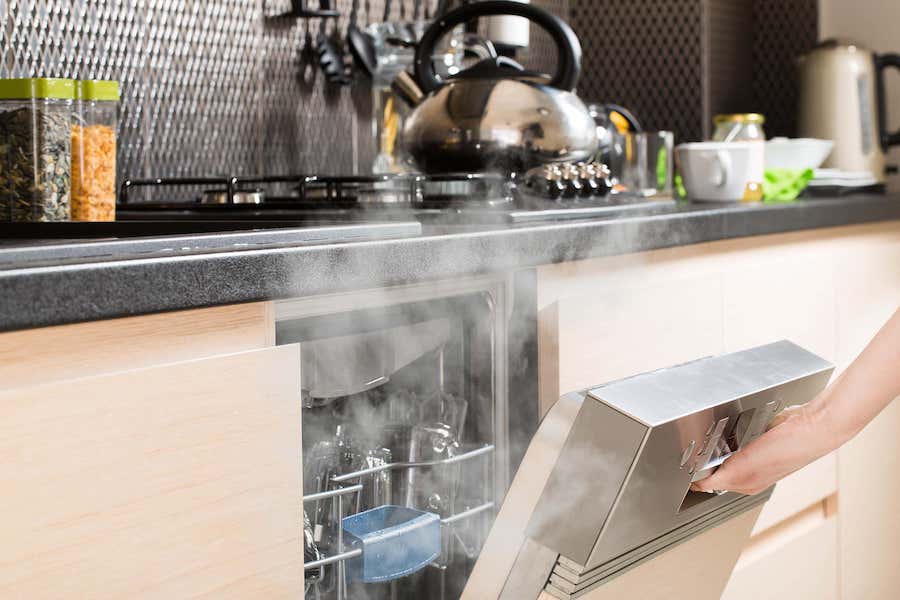Are you particular about loading your dishwasher?
How exactly do you load a dishwasher?
We’ve all been there. It’s an age-old argument and, in most households, there are some people who obsess over how the dishwasher is stacked and others who just want clean dishes.
But what exactly are the rules, and does it really matter?
Experts at Finish Dishwasher Tablets revealed: “Dishwashers come in all shapes and sizes to cater to everybody’s needs and kitchens, but generally there are a few rules to follow when it comes to filling your dishwasher. Thinking about how you stack your dishwasher can ultimately make doing the dishes that little bit easier.”
Check items can actually go in there
Be sure your dishes, and other items, are ‘dishwasher safe’ before you load them. Most items can go in the dishwasher, but the Finish experts say some non-stick surfaces could become less effective, and it’s not a good idea to put lead crystal glasses in either – they should be washed by hand.
No need to pre-wash
Just scrape leftover food off dishes, there’s no need to pre-wash them. Anything thick and caked on should be removed, but smaller particles like grains of rice may come off in the dishwasher. However, wiping off with a cloth will lead to much better results. Let experience be your guide, and if dishes aren’t coming out clean, try pre-rinsing in hot water to loosen food before it hardens onto them. Proteins such as eggs and cheese, cooked or baked-on foods, and starches that have dried onto the dish often require extra attention.
Stack from the back
Start stacking from the back of the dishwasher, so you don’t have to keep rearranging the dishes every time you want to slot another one in.
Size order
The Finish experts recommend putting larger plates at the back of the dishwasher and loading in size order. Put pots and pans open-side down in the bottom section.
Take care with glasses
When putting glasses in the dishwasher, make sure they aren’t touching each other, because the water pressure could make them bang against each other and break. Smaller glasses should go on the top rack and taller glasses on the bottom. If you have a plastic, mesh-like piece on the top rack, use it to grip wine-glass stems to stop them from getting scratched or cracked.

Put plastic on top
Put plastic items on the top rack, as the heating element in most dishwashers is on the bottom, and if plastic items are placed near it they could melt. Also, make sure they’re secure so they don’t flip and fill with water.
Lean the dishes
If you stack things slightly on their side, it not only ensures the detergent reaches everything, but also helps the water drain away effectively. So lean dishes inwards and downwards if you can.
Don’t overcrowd
While you should always make sure the dishwasher’s full, so you’re getting value for money and being energy-efficient with each wash, it’s never good to overcrowd it. This will lead to items not being properly cleaned if the water can’t reach them, and food can get trapped on your dishes.
Don’t stack things on top of each other
Dishes that are stacked on top of each other won’t be entirely secure and could be dislodged by the pressure of the water, leading to breakages. Stack bowls neatly at an angle, so the detergent can get inside them and so they’ll drain. But don’t let them take up too much room.
Knives down, cutlery up
Either wash sharp knives by hand, or put them face down in the cutlery rack to avoid accidents. Put all the other cutlery handle-down, separating pieces as much as possible. Bigger pieces of cutlery, like serving spoons, should be laid down on the top shelf, facing down so water doesn’t collect in them.
What are your views? Are you particular about how your dishwasher is loaded? Do you rearrange items if someone hasn’t filled it how you like it?




















